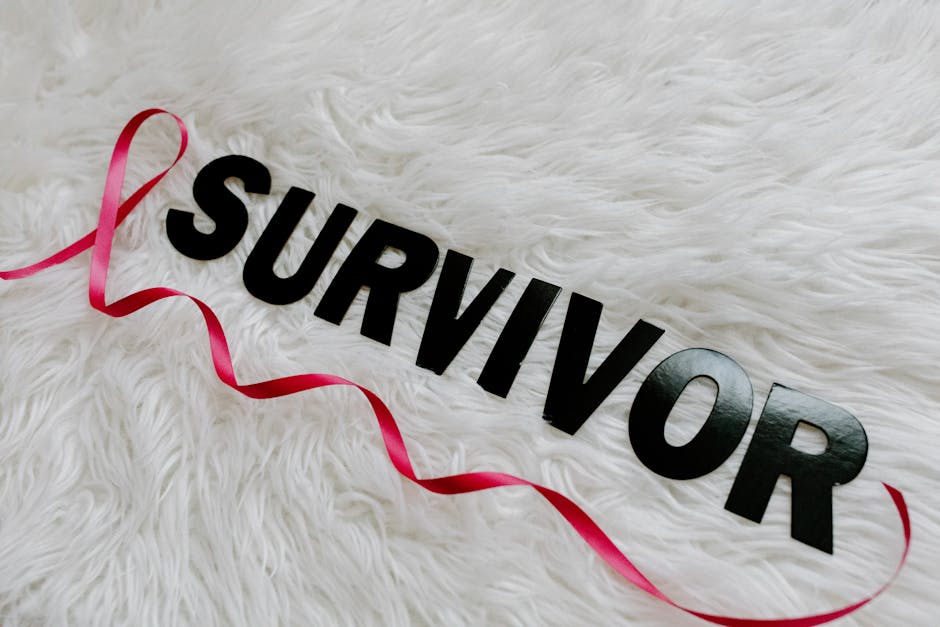Table of Contents
The Community Safety Education Act, it’s a big deal for everyone, really. Most people might not know much about it, but this law helps shape how folks in the community and police officers get along. It’s all about making things safer and clearer for everybody involved. The main idea behind it feels pretty straightforward, once you start to pick it apart a bit.
It mostly focuses on teaching people about their rights. Think about it; when you deal with law enforcement, knowing what you can and cannot do, or what they can and cannot do, really helps. This act tries to make that knowledge easy for regular people to get. It’s not just for adults either; younger folks need to understand these things too.
The law also pushes for better ways police and the public talk to each other. Sometimes, misunderstandings cause problems, you know? So, training both sides to talk more openly and respectfully makes sense. It builds trust, which is something many neighborhoods really could use more of. What’s interesting is how much good can come from simple, clear talk.
Another thing it does is set up rules for what police training should cover. It pushes for them to learn about different groups of people and their cultures. This means officers can respond better to situations, not just based on assumptions. It makes for smarter police work, and I believe it keeps things calmer for everyone.
The law even tries to cut down on bad stuff happening during police stops. It points out what officers should say and do when they pull someone over. And it tells people what they should do too. It just puts everything out in the open, which feels fair. This sort of clarity helps avoid confusion for both sides.
So, the whole point of this Act is pretty clear: make communities safer through education and better ways of talking. It’s not just about one thing. It covers a bunch of areas that, when put together, really make a difference. The more people know, the better things usually go, doesn’t it?
What the Act Actually Covers
This law talks a lot about making sure everyone knows their rights when they interact with police. It’s for you, me, our neighbors, everyone. Police officers, they learn about rights too. This makes sure both sides sort of start on the same page. It lessens confusion later on.
It also goes into detail about what happens during a traffic stop. Like, what should an officer tell you when they pull you over? What should you do? This information helps people understand the process. It sort of removes some of the guess work, which can be stressful. This clarity helps everyone.
The Act sets up guidelines for how police departments give classes to the public. These classes can teach people about police procedures and how to act during a stop. It’s not mandatory for everyone to go, but having the chance to learn is a good thing. It builds a more aware public.
Then there’s the stuff for police officers. The law tells police academies what they need to teach recruits about talking to people. It’s about being good communicators, not just about enforcing rules. This training helps them deal with many different types of people they might meet.
It also makes sure police are taught about different backgrounds people have. This is called cultural awareness. It helps them understand why someone might act a certain way. This awareness can prevent misunderstandings from happening. It just helps officers be more thoughtful.
Who benefits from This Law?
You might wonder who truly gains from the Community Safety Education Act. Really, it’s everyone living in a community. When interactions between police and residents go smoothly, it creates a calmer environment. This means less stress for citizens and also for the officers doing their jobs. Everyone wins with clear rules.
People who drive cars are another big group that benefits. Knowing what to expect during a traffic stop makes things less scary. Drivers can feel more ready, and officers can do their job without as much tension. It just makes those roadside interactions much easier for folks.
Young people, especially teenagers, also get a lot from this Act. They are often just starting to drive or interact with police on their own. Learning about their rights and responsibilities early can help them make smart choices. It prepares them for grown-up situations.
And of course, police officers benefit a great deal too. When citizens know their rights and how to act, officers face fewer problems. Better communication training also makes their difficult job a bit less hard. It gives them more tools to do good police work.
Community leaders and local groups also see good things from this law. They can use the materials and training suggestions to help their own neighborhoods. It gives them something solid to work with when they want to improve police-community relations. It’s a tool for positive change.
Why This Law Came About
The idea for this law didn’t just pop up out of nowhere. People saw problems happening in communities. There were often misunderstandings, sometimes really bad ones, between police and citizens. These events made people realize something needed to change quickly.
Many people felt that there was a lack of clear information. Citizens didn’t always know what they should do or say. And sometimes, police didn’t have the best training on how to talk to people from all walks of life. This led to tension, and often, arguments.
There was also a real push from community groups. They wanted more peace and safety. They believed that education could play a big part in making things better. So, they spoke up, loud and clear, about needing something like this Act. Their efforts really helped.
It was also about making things fairer. People want to feel like they are treated with respect, no matter who they are. The law tries to set up a situation where everyone gets treated properly. It aims for more respect during police contacts, which is important.
So, the Act came from a need to fix things. It’s about trying to make public safety work better for everyone. It shows that when people speak up and work together, good laws can happen. It really tries to get everyone on the same page.
How the Act Works in Practice
The Community Safety Education Act pushes schools to teach students about their rights and how to act if they get stopped by police. This stuff gets put into health or social studies classes usually. It’s about giving kids real-world knowledge they can use. They learn to be calm.
For police departments, the Act means they need to update their training. They bring in experts to teach officers how to talk to people better. It covers things like de-escalation; that means trying to calm down a tense situation. It trains them to handle things without fuss.
The law also wants police to set up programs for the public. These programs might be simple workshops at a community center. They help answer questions people have about police work. It just gets more information out there, which helps build some trust.
Some places might create online videos or booklets. These tools explain what the Act means for everyday folks. They lay out the basics really simply. It makes sure that even if you don’t go to a class, you can still find out what you need to know easily.
It’s about constant learning, for everyone. The law isn’t a one-time fix. It sets up a way for education to keep happening, year after year. This means new police officers learn these things, and new generations of citizens also get the information they need. It is a long-term plan.
Impact of the Act on Communities
When people know their rights, they feel more confident. This can make them less scared when they talk to police. It builds a sense of control for the average person. This sense of knowing what’s what helps reduce some of the everyday stress people feel.
Police officers also feel a bit better because interactions might be less confrontational. When people know what to do, it makes their job flow better. It’s safer for them, too, when misunderstandings don’t get out of hand. That’s a good thing for everybody.
And actually, some places have seen fewer complaints about police treatment after this Act got going. That tells you it’s doing some good. When both sides are more aware, problems seem to happen less often. It just makes things operate more smoothly.
It helps bring different parts of the community closer. When police teach public classes, they get to meet people outside of emergencies. This can make people see officers as actual neighbors, not just uniforms. It builds real, human connections between them.
The law basically says, hey, we all live here together. It pushes for understanding instead of fear. This kind of focus on education and clear talk can change a whole town’s feeling. It makes everyone feel a bit safer, you know?
Challenges and Future Considerations
Even with a good law like this, there are always some bumps in the road. Getting everyone to actually follow all the new rules can take time. Sometimes, schools might not have enough money to put on all the classes. This makes getting the message out hard.
Police departments also have their own budgets and time limits. Adding new training can be tough when they’re already busy. It’s about finding ways to make it fit into their daily work. They need proper support to make the changes stick.
And even when the classes happen, not everyone might pay attention or care. It’s a challenge to get every single person interested in learning this stuff. It takes a lot of effort to reach everyone, especially those who need the information most.
Looking ahead, I think we need to keep pushing for more consistent training across all areas. Some places might be better at it than others. It’s important that every town gets the same chance to learn these things. Equality in training really matters.
We also need to make sure the information stays current. Laws change, and so do the ways people interact. So, the Act’s guidelines should probably get looked at often. This way, the education it pushes for always feels fresh and useful.
The Core Message of the Act
The Community Safety Education Act is pretty simple at its heart. It says that knowledge is power, especially when it comes to dealing with the police. It wants everyone, both citizens and officers, to know the rules of the road. This prevents a lot of trouble.
It makes a clear statement that how people talk to each other matters a lot. Respectful communication can avoid so many bad situations. The Act basically says, let’s learn to talk things out, not fight them out. This makes sense for any interaction.
The law also shows that safety isn’t just about catching criminals. It’s also about making sure everyday interactions are safe for everyone. It wants things to be calm and fair. That’s a different way of thinking about safety for a lot of people.
It tries to build bridges where sometimes there were walls. By giving people information and training, it aims to create more understanding. It’s like, let’s understand each other’s side a bit more. That makes things feel a lot better.
So, the whole thing boils down to building trust through education. That’s what I think is the biggest takeaway from this Act. It’s about making our towns and cities places where everyone feels more secure and more respected. It’s a good goal.
Why Education is Key
Education, it really can change how people see things. When you learn about something new, your whole outlook can shift. For the Community Safety Education Act, teaching people their rights changes how they approach police. They feel less helpless, which is a good thing.
It helps cut down on rumors and wrong ideas. People often hear things that aren’t true about police or about what they can do. Good, solid information from the Act clears up all that confusion. It sets the record straight for everyone.
And learning also lets people know what they should expect. There are rules for how police act, and rules for how citizens act. When everyone understands these rules, things go more smoothly. It’s like knowing the rules of a game; it makes playing easier.
It makes people more responsible too. When you know your rights, you also know your duties. So, if the Act teaches you what to do, it gives you a part to play in keeping things safe. It makes you an active part of public safety.
I believe that without this kind of direct teaching, misunderstandings would just keep happening. People would be left guessing, and that’s not good for anyone. Education really is the first step towards a calmer, safer community for all.
Key Takeaways
The Community Safety Education Act works to make interactions between police and the public smoother and safer for everyone involved.
It teaches people their rights and what to do during police stops; like traffic stops.
The law also pushes for better training for police officers on how to talk with people.
It aims to build trust and cut down on misunderstandings between citizens and law enforcement.
Everyone in the community benefits from this Act because it means less tension and more understanding.
The Act came about because people wanted clearer rules and more fairness in police interactions.
Education is seen as the main way to reach these goals, for both police and the public.
Frequently Asked Questions
Q: What is the main goal of the Community Safety Education Act?
A: Its main goal is to make interactions between law enforcement and the public safer and clearer; by educating both sides about rights and proper actions.
Q: Does this Act only teach citizens, or does it apply to police too?
A: No, it applies to both citizens and police; it sets guidelines for what citizens should know and what training police officers should receive.
Q: How does the Act help prevent problems during police stops?
A: It helps by giving clear rules and information to both police officers and citizens about how they should act during a stop; which lessens confusion.
Q: Is the education provided by this Act mandatory for everyone?
A: No, the education isn’t usually mandatory for every citizen; but it does push for schools to teach students and police departments to offer public programs.
Q: Why was this law created in the first place?
A: It was created to address ongoing misunderstandings and tensions between police and communities; aiming to build trust and improve safety through education.












